ABG mix has been the gold standard in the terrarium and vivarium industry for many years.
First developed by – and named after – the Atlanta Botanical Gardens, it’s a tried-and-tested option that brings a lot of benefits to the table.
I’ve personally used variations of this classic mix in a wide variety of terrariums with (mostly) great success. So, in this article, we’re going to break down the components that make this mix so special and effective.
Plus, we’ll share the ABG mix recipe so you can make your own!

Terrarium Tribe is reader-supported. When you purchase through links on our site, we may earn an affiliate commission (at no further cost to you). 💜
Why is the ABG Mix so Good?
For starters, substrate mixes are almost always superior to single substrate choices.
Each element of the mix plays a different role in supporting plants and facilitating a healthy terrarium ecosystem. The ABG mix is particularly effective because it balances each of those elements so well.
- Excellent drainage – In a closed system, drainage is essential to keep your plant’s roots healthy and aerated (and not drowning in a soggy substrate).
- Great water retention – Ensuring your water-loving plants are well supplied, and it also helps to boost humidity to create that tropical environment.
- Retains nutrients – Though the peat moss doesn’t add much in the way of nutrients, it’s incredibly effective at holding onto them.
- Resists compaction – With so much spongy, fibrous material in the mix, it’s able to stay well aerated and resist compaction over time.
- Long lasting – This mix can easily last years before losing functionality.

Classic ABG Mix Recipe
Surprisingly, it’s actually quite difficult to find the source citation for the ABG mix recipe.
And if you ask any expert what it was, you’re likely to receive a slightly different answer! Based on my research, it seems the original recipe was as follows:
- Sphagnum Moss – 1 part
- Tree Fern Fiber – 2 parts
- Orchid Bark – 2 parts
- Peat Moss – 1 part
- Charcoal – 1 part

Putting this recipe into practice, I believe these ratios are set in volume rather than weight, as weight can vary a lot depending on the material.
And though this is the original recipe, you’ll now see many variations available on the market. So don’t be surprised if the materials list of a purchased pre-made mix doesn’t match this exactly.
If you want to grab a bag of classic ABG Mix, here’s one on Etsy.
Or, if you’d like to see our take on ABG mix – see our Terrarium Substrate Mix (it’s lighter and more eco-friendly!).

Premium Terrarium Substrate Mix
Our carefully crafted blend that balances all of your plants’ needs.
Available on the Terrarium Tribe Store.
In the rest of this article, we’re going to deep dive into these materials and show you how to substitute them where necessary.
ABG Mix Components
ABG mix is actually classed as a soilless substrate.
Despite using traditionally fibrous and chunky base ingredients, the mix is designed to be quite light and fluffy (and it pulls it off).
This is partly thanks to the addition of several materials chosen for that very purpose but also due to each of the materials being used at a loose, fine granularity.
It’s designed to mimic the native tropical soil layer of the rainforest environment, so it’s an ideal substrate for bioactive vivariums and terrariums.
So, if you’re making this mix yourself, it’s important to get the right kinds of ingredients to get the ideal consistency.
1. Sphagnum Moss
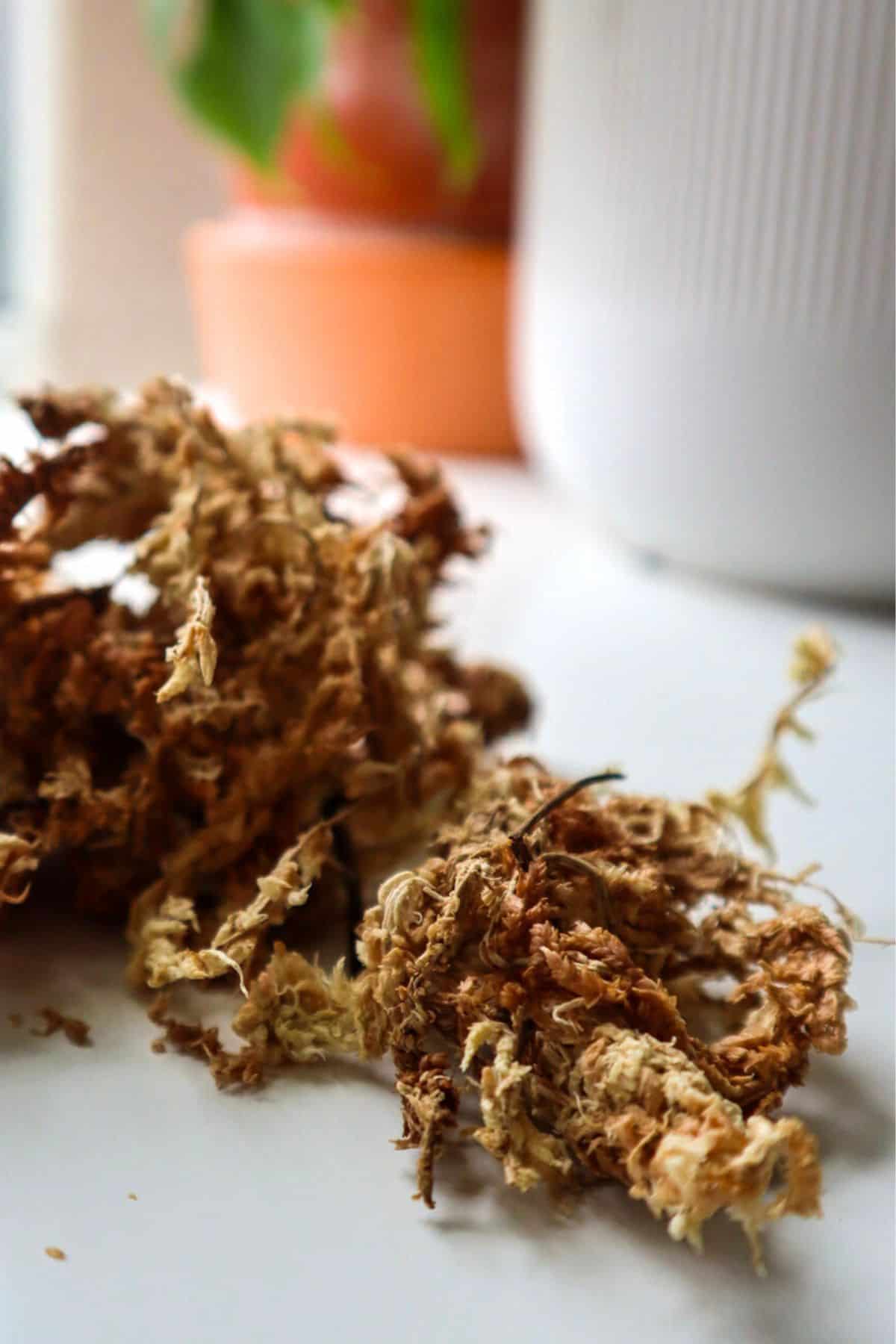
Of course sphagnum moss features in this list; it’s a true terrarium staple.
It’s fantastic at retaining moisture and boosting humidity, and it helps to create an acid environment that slows the rate of decay.
You’ll typically see “milled” sphagnum moss listed in the recipe, and it’s essentially just sphagnum that’s been ground down to a fine grain.
If you can’t find it at this consistency, you can buy the long fiber stuff and simply chop it up, blend it, or tear it by hand.
We sell premium long-fiber sphagnum that’s perfect for the job.

Sphagnum Moss (Premium Long-Fiber)
High-quality, eco-friendly moss for optimal moisture retention.
Available on the Terrarium Tribe Store.
2. Tree Fern Fiber
Sourced from a variety of tree fern species (often Dicksonia), this versatile material looks like heaps of tiny twigs and really adds an element of natural aesthetic to a mix.
Tree fern fiber is primarily there for aerating the substrate and providing drainage.
The twig-like shapes form irregular frameworks in the mix, supporting the overall structure, resisting compaction, and creating air pockets.
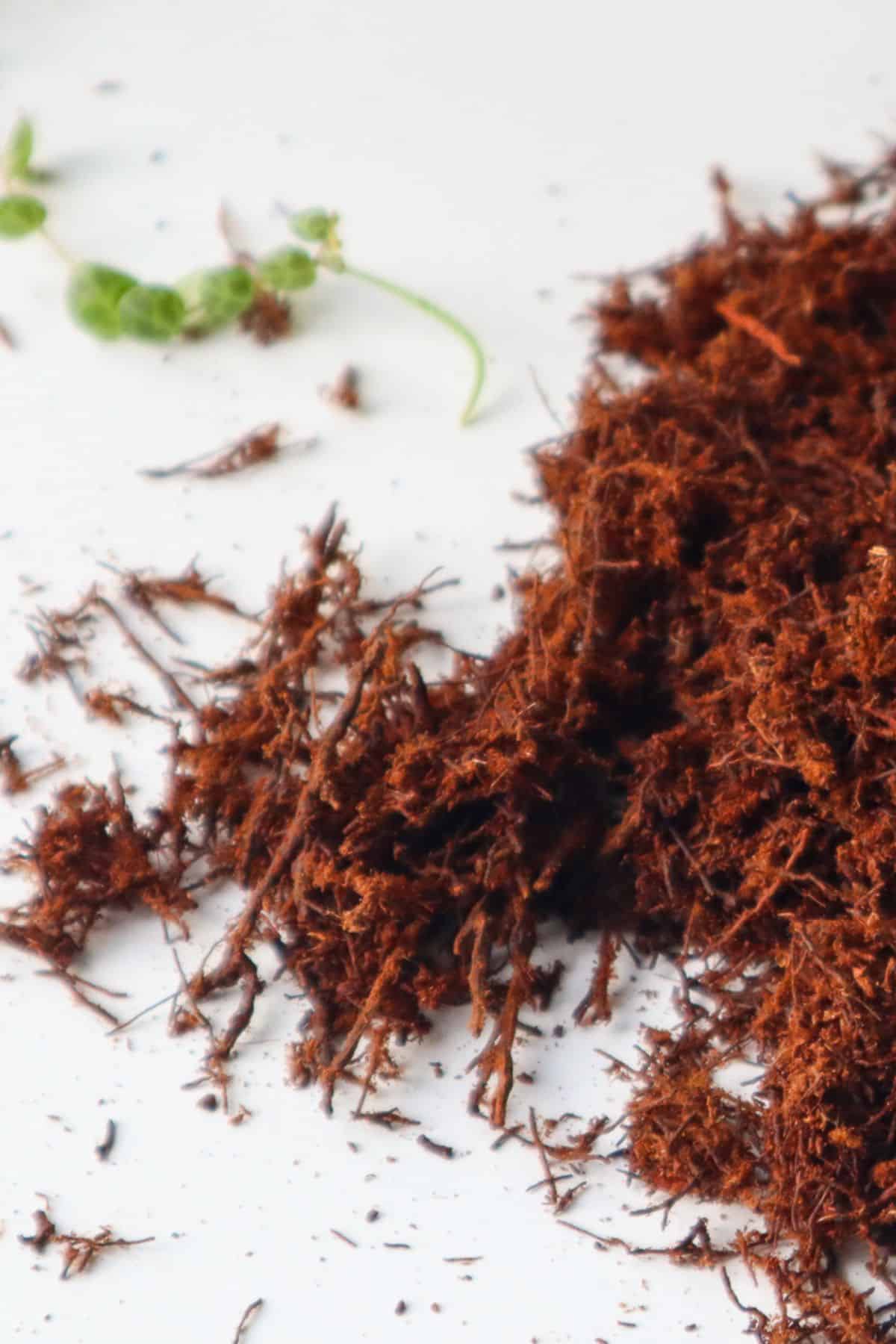
👉 Shop tree fern fiber on Etsy.
3. Orchid Bark
Orchid bark (named for what it’s used for, not where it comes from) serves a similar purpose to the tree fern fiber in providing drainage and aeration.
The material comes in a variety of degrees of “chunkiness” depending on how it’s processed and what trees it’s sourced from (fir bark being the most commonly used).
Ideally, you’ll probably want to find orchid bark at the smallest possible particle size.
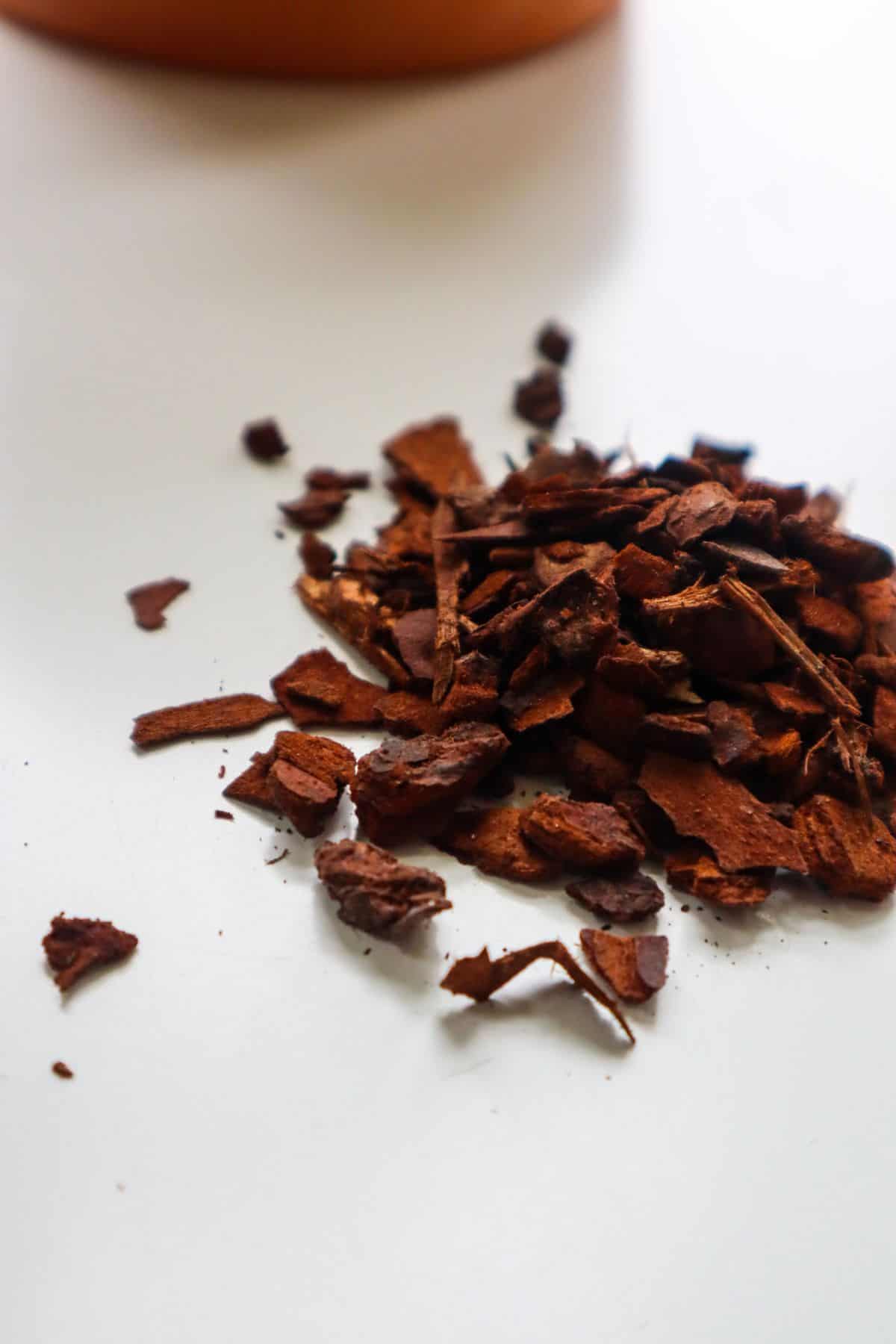
4. Peat Moss
Peat moss is a more controversial substrate element.
It’s often confused with sphagnum moss because, in many ways, they come from the same peat bog source (and kind of share the same name), but they’re very different things.
Peat moss is typically included for its excellent water retention and uniquely powerful ability to retain nutrients. Plus, it has a nice fine texture that’s good for planting in.
But sadly, it’s a non-renewable product, so it’s getting less use over time (we don’t personally use it for this reason).
I prefer to use coco coir, as explained later in the “Substitutes” section.
5. Charcoal
Charcoal is often used in terrariums for its ability to filter any water that passes through it, thus “sweetening” the substrate.
Due to its porosity, it can also help with water retention and aeration too.
Though the recipe doesn’t indicate any one particular kind, horticultural charcoal, and activated charcoal are your best bets from a filtration point of view.
Being the most porous of all (by a large margin), activated charcoal is arguably the most functional, but it’s also the most expensive. Horticultural charcoal sits somewhere in the middle as a happy medium.
Just note not all types of charcoal are suitable for terrariums – so it’s important to choose the right kind. Check out my guide to terrarium charcoal for more help.
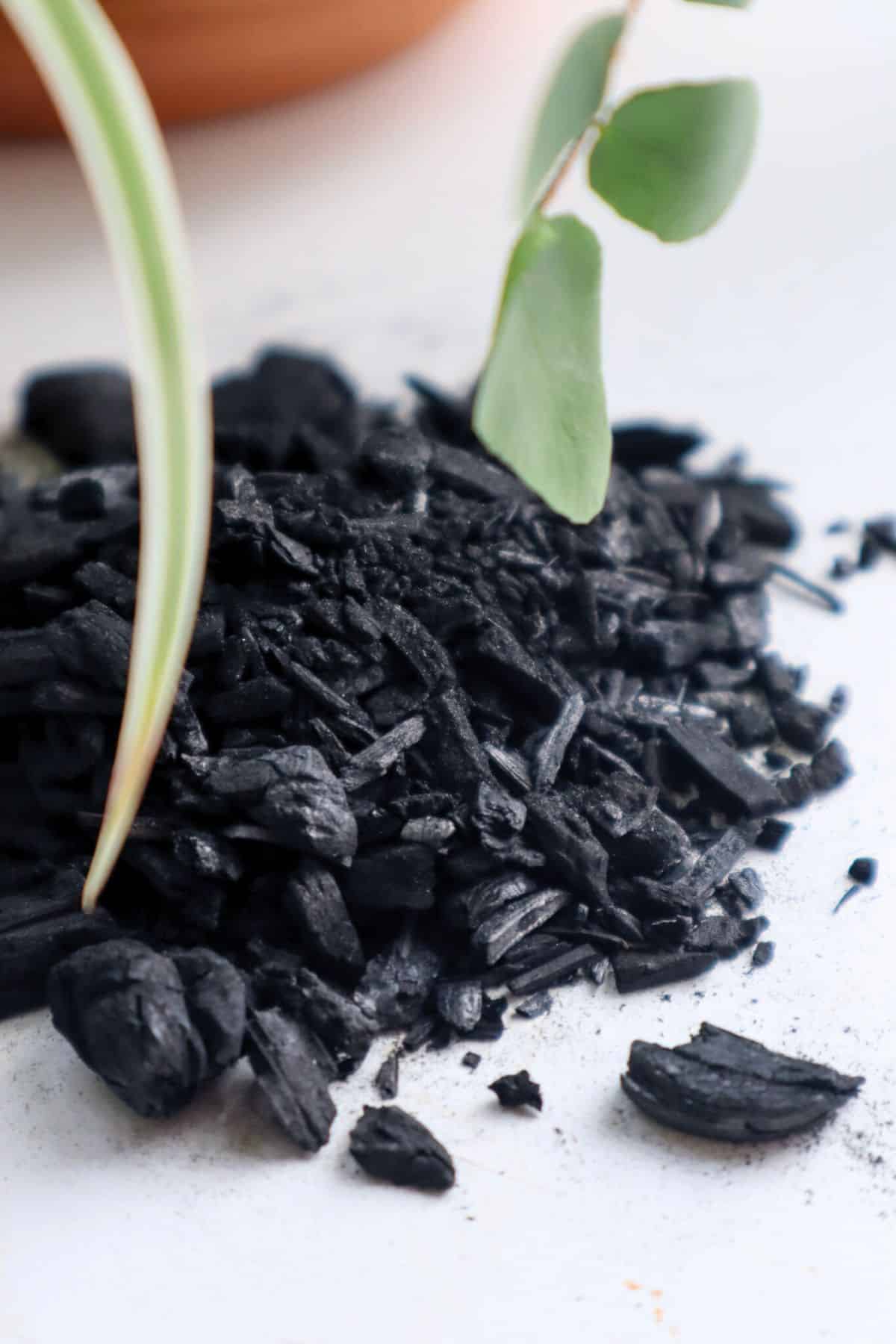
Adapting the ABG Mix – Material Substitutes
With any good substrate mix, the sum is greater than its parts
Each element plays an important role, but the interaction between them is critical to success too.
In this case, consider how the tree fern fiber framework might support the chunkier bark pieces and finer fibrous elements. We can begin to see why this mix is so effective at aeration and drainage.
That’s why adapting a mix isn’t always quite as simple as it may seem.
However, with a variety of the original recipe ingredients being either expensive, hard to find, or unsustainable, it’s worth exploring ways to do it.
I always recommend ABG mix as a starting point, but I’ve never actually used the original recipe.

For me, peat moss is a definitive no, and tree fern fiber is too difficult to source sustainably (or at least without spending a fortune). Plus, as good as the ABG mix is, it can always be fine-tuned to better serve your desired setup.
So, shall we jump to my recommended material substitutes?
*Wait, hold up. I just want to make one thing clear before I’m flamed into oblivion. These are not 1-1 replacements, and they do fundamentally change the mix as a whole.
I’m not saying these substations are perfect, but they’re the best fits that I can think of – so let’s see them.
Peat Moss -> Coconut Coir
With excellent water retention properties, coconut coir can be a good substitute for peat moss.
Peat moss decays over time, which on one hand, is a good thing as it releases nitrogen into the substrate (which can help support plant growth). But, on the other hand, you have an organic component that is eventually going to fully break down and spoil (normally in a few years).
Coconut coir overcomes this as it’s a completely inert, very stable material. So it won’t degrade for a very long time, but nor will it support plant growth in any way.
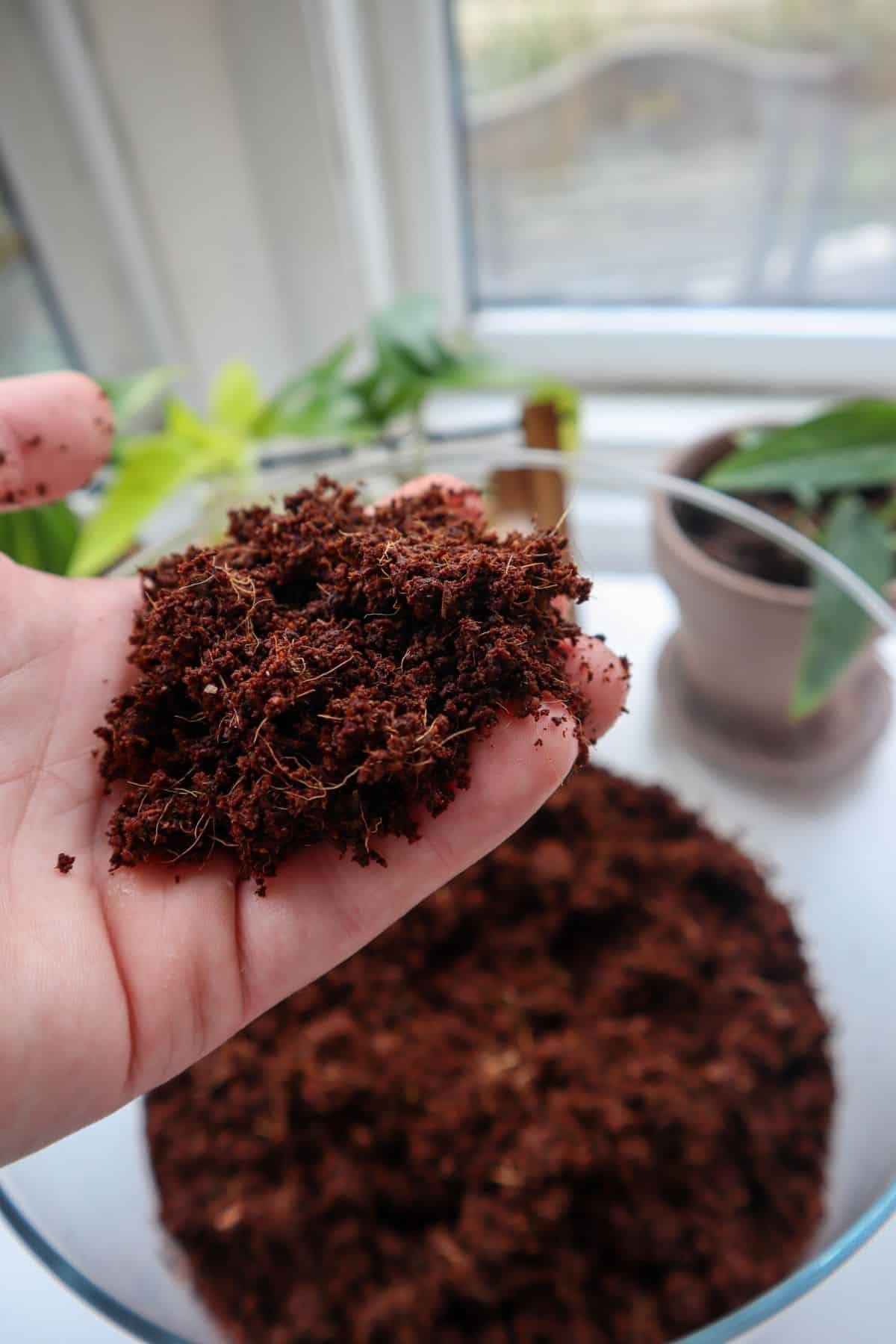
Adding in some earthworm castings can substitute some of the nutrients, too.
Tree Fern Fiber -> Pumice or Lava Rock
Tree fern fiber is often the most difficult component to source and, frustratingly, the most difficult to accurately replace.
Though pumice and lava rock are both completely different in appearance and structure from tree fern fiber, they’re also very effective at adding aeration substrate and improving drainage.
So, even though it’s going to significantly change the consistency of the mix (rocks and twigs are very different things), they’re arguably the most capable substitutes for performing the function of tree fern fiber.
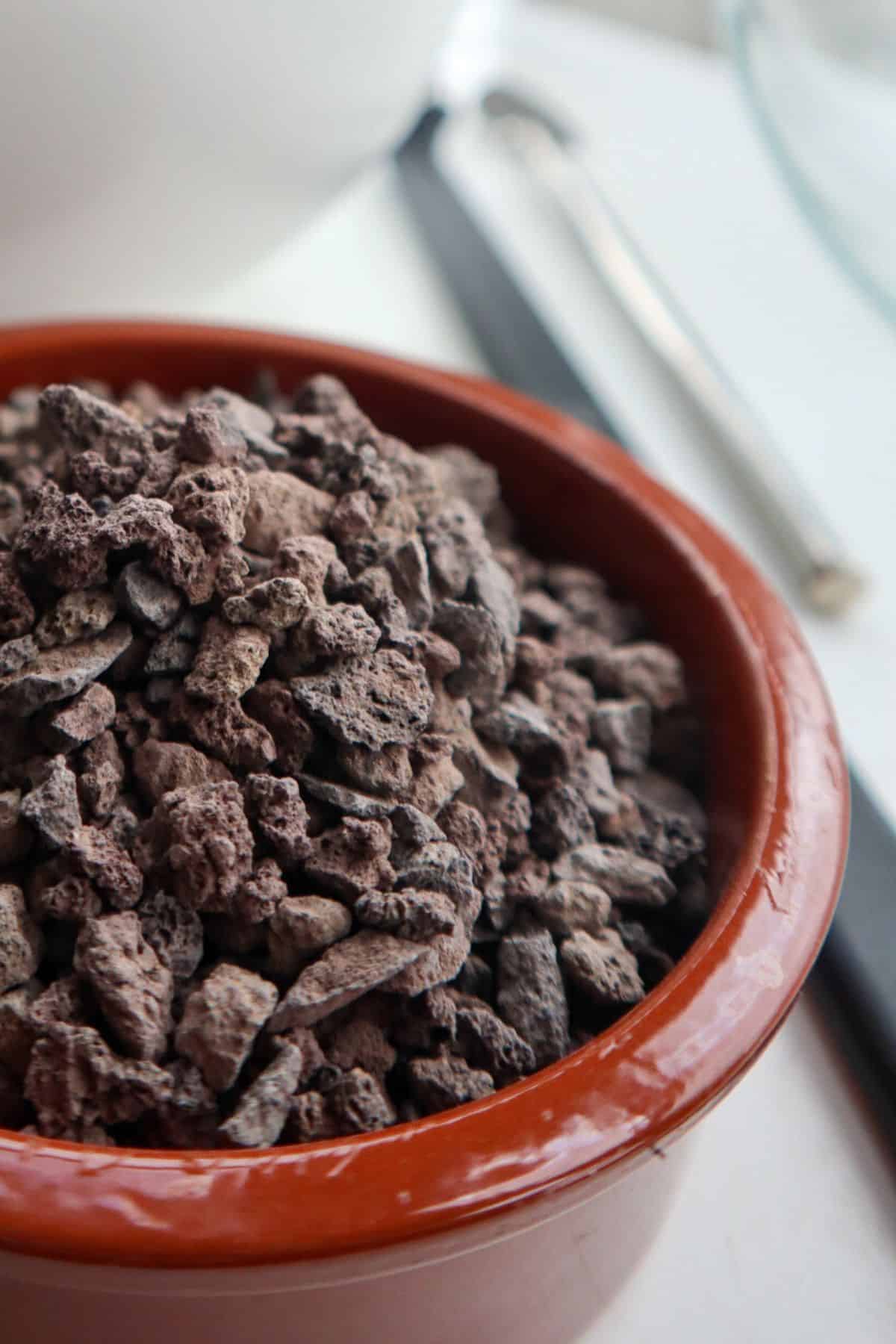
Over to You
Do you use ABG mix in your terrariums or vivariums? I’d love to hear from you!
Particularly if you’ve substituted any ingredients or come up with your own recipe.

This has a ton of great information. That being said, cococoir (or cocofiber) is definitely NOT ‘inorganic’. It may resist degradation for longer, but saying that it is inorganic (like vermiculite is) weakens the validity of the rest of this wonderful information.
Thanks Aaron, you make a very fair point 😊 By inorganic I was thinking more from a chemistry point of view (in that it’s not supplying any organic compounds) but as it comes from a biological source (and it will eventually break down) then you’re absolutely right, it’s wrong to call it inorganic. I’ve updated the article with your comments in mind, and I really appreciate your kind words.
Thank you for your helpful information! I still have one question regarding this recipe. Is this recipe suitable for growing trees? From my understanding, all these materials are quite light in weight. Are this mix able to provide enough physical support for a small fruit tree (for example a dwarf mango tree)?
I can’t say for sure but you’re absolutely right, it’s quite a lightweight fluffy mix. I’d imagine you would need something heavier to support a tree.
Thanks for all these details! I have only 1 question: what type of peat do you mean? The one which has higher acidity and little nutrients (from boglands), or the one which is Ph-neutral and has more nutrients (from fens). We have both in market.
Almost certainly the one from boglands, I’m not sure which product would be called peat and come from a fern source.
Is it possible to substitute vermiculite for perlite? I have plain vermiculite for gardening, but the perlite available all has MiracleGro mixed in…not good for reptiles.
*Edited (thanks to everyone in the comments for the correction). Vermiculite and perlite are not interchangeable here.
Hello and thank you for some very interesting and valuable information. I grow orchids so that’s why I found this article of interest. Coir as being a slowly decomposing organic material has already been covered. As a substitute for orchid/pine bark I’d recommend the use of coconut husk chips (CHC). It has the similar decomposition quality of coir but retains far more moisture than bark. But if mixed with LECA pellets it can cut down on the overall amount of retained water, distributing moisture more evenly and still imparting light weight and compaction resistance while being inorganic and totally resistant to decomposition. The only thing I would also like to point out is that while both petite and vermiculite are both inorganic, vermiculite does hold more moisture than perlite, so they are not completely interchangeable in my opinion. But I believe that all these various products can and should be considered in formulating the ideal terrarium or terrestrial orchid potting media mix depending upon your individual goals and environmental conditions.
Thanks John, great tips!
I was just wondering if sand can be used as an alternative for tree fern fibre, and if not why?
In some ways, yes. Tree fern fiber is the hardest to replace because it has quite a unique physical structure. Though, sand is still effective at substrate aeration and drainage.
As someone else mentioned, while similar, perlite and vermiculite are not really interchangeable. Vermiculite will absorb more and has a higher gas exchange making it a more damp substrate.
While I would prefer to use an all natural substrate, I am beginning to feel using something like plastic twigs would be the most comparable to tree fern fiber.
I totally agree (I’ve just noticed and updated my original comment that others have referred to). We’re all learning! 🙂
I am attempting my first bioactive build, ideally for a crested gecko down the line once everything is established. When making this substrate do you layer or mix all together? I’ve worked out everything else in the terrarium except the base so far and that seems to be where I’m running in to trouble.
Mix everything together, that way the benefits of each component are evenly distributed.
Is mixing parts based on weight, or volume? Sphagnum moss is very light and fluffy so based on weight, it takes up a huge amount of space compared to volume. Thank you!
Volume for that exact reason 🙂
How good would this mix be for general houseplant use? I’m building up a pretty good collection of tropical houseplants and am looking for the best, all around substrate to pot them in.
ABG is a great all rounder!
I am a “Newbie” and would love to hear everyone’s suggestions, opinions etc. I’m setting up a terrarium/vivatarium for 2 white tree frogs. I’m an avid reader and like to have as much information as possible. I will definitely be using ABG Mix, lava rocks and building a cave using dragon rock (it’s beautiful rock but pricey.) I plan on a bottom layer of lava rocks than ABG Mix. I would like to add sturdy live plants and was wondering if it’s alright to keep them in their original pots? Dried bamboo will be added to the plants hoping this will add to their sturdiness. One frog is already 3″. I have a lot of experience with exotic animals (fur, feather & fins.) Any advice would be appreciated!! Thank you in advance 🙂
Hi Sal, I’ve not heard of keeping plants in pots in a terrarium before but I don’t see a reason it wouldn’t work.
I really enjoyed your article. I’m getting ready to set up a 90 gallon (340 liter) terrarium for terrestrial orchids, mostly Paphiopedilums. A problem I’ve had in the past is keeping the sphagnum moss from growing since it can take over. Do you have any suggestions for either preventing that from happening or a substitute for sphagnum moss?
Thank you
Hi Doug, that project sounds great! It might be a good idea to play around with the ratio – maybe use less sphagnum? If you want to go without all together just make sure you use plenty of moisture retentive materials in the mix, though nothing really holds moisture quite like it.
I was wondering at what ratio would add in earthworm castings.
We typically recommend around the 10% mark for organic components like earthworm castings.